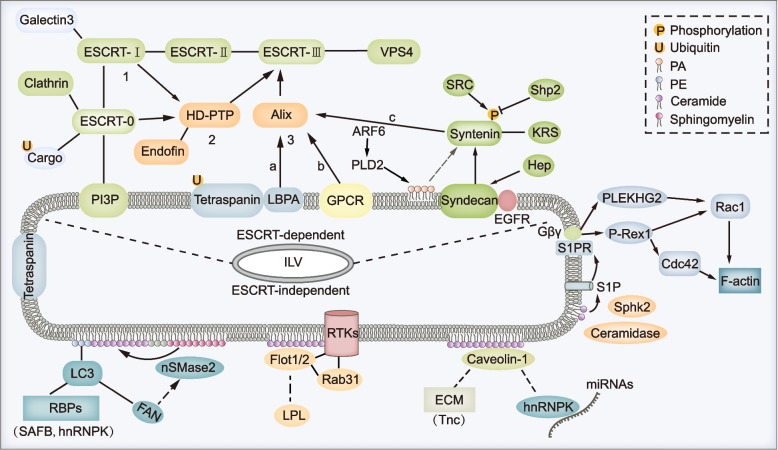Fig. 2.
Multiple mechanisms regulate the formation of ILVs. MVBs are characterized by containing intralumenal vesicles which can be controlled by multiple mechanisms. Generally, they can be divided into two categories which are ESCRT-dependent pathway and ESCRT-independent pathway. For the classical ESCRT-dependent pathways, ESCRT-0, -I, -II, -III subcomplexes and ATPase VPS4 cooperate in a stepwise manner to mediate the ILV formation (1). For the non-canonical ESCRT-dependent pathways, HD-PTP (2) or Alix (3) can both recognize specific cargos and recruit ESCRT-III and VPS4 to limiting membrane of MVBs, during which other ESCRT subcomplexes are not indispensable. In addition, several other proteins or pathways especially components of lipid rafts paly crucial roles in ESCRT-independent ILV formation. For example, CD63 could promote ILV formation by both ESCRT and ceramide-independent mechanism; nSMase2-ceramide pathway could drive ILV formation and MVB sorting of cargos such as PE-conjugated LC3 and its binding partners in an ESCRT-independent mechanism. Moreover, caveolin-1 or flotillins could drive lipid raft dependent ILV formation, during which process nSMase-ceramide pathway is required in some cell lines. Specially, F-actin formation on the limiting membrane of MVBs that was regulated by S1P signaling promotes ILV sorting of cargos, though the precise role of F-actin formation during the generation of ILVs is still elusive

